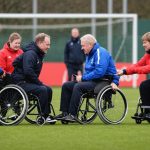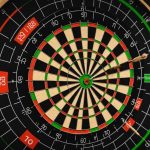Top Recovery Techniques for Athletes Post-Competition: Rejuvenate and Excel!
When athletes push their bodies to the limit during competitions, the real challenge often begins after the event is over – the recovery phase. Effective recovery is crucial for maintaining performance, preventing injuries, and ensuring long-term athletic success. Here’s a comprehensive guide on the top recovery techniques that athletes can use to rejuvenate and excel.
Understanding the Importance of Recovery
Recovery is not just a passive process; it is an active and essential component of any athletic training program. As Christie Aschwanden notes in her book “Good to Go,” “muscle pain can peak 24 to 72 hours after a hard workout,” a phenomenon known as Delayed-Onset Muscle Soreness (DOMS)[1].
Also to discover : Essential Recovery Techniques: Cooling Down Properly After a Competitive Swim Meet
During physical exercise, muscle fibers are damaged, leading to inflammation and soreness. It is during the rest periods that muscles have the time to recover, rebuild, and strengthen. The American Council on Exercise (ACE) emphasizes that strength and muscle gains actually occur outside the gym, during periods of rest[1].
Assessing Your Recovery Needs
The amount of recovery time needed varies significantly depending on several factors, including the type and duration of the workout, workout intensity, frequency, and individual nutritional habits.
Have you seen this : Enhancing Your Golf Game: Leveraging Sports Science for Precision in Shot Accuracy
Factors Influencing Recovery Time
- Workout Intensity and Duration: More intense and longer workouts require longer recovery periods, which can extend from 2 to 3 days or even up to a week[1].
- Frequency of Workouts: Athletes who train frequently need to ensure they are not overtraining, which can lead to decreased performance, elevated blood pressure, and other health issues[1].
- Nutrition: Proper post-workout nutrition, including adequate amounts of protein, is crucial for muscle recovery and growth[1].
- Individual Adaptation: Athletes who are new to certain movements or exercises may need more recovery time compared to those who are accustomed to the specific activities[1].
Active Recovery Techniques
Active recovery involves engaging in low-intensity activities that promote blood flow without overworking the muscles. Here are some effective active recovery techniques:
Low-Intensity Exercise
- Swimming: Swimming laps is a great way to keep the body moving without putting excessive strain on the muscles.
- Yoga: Yoga helps in improving flexibility and reducing muscle soreness.
- Walking or Light Jogging: Gentle cardio exercises that keep the blood flowing.
- Easy Bike Ride: A leisurely bike ride can help in maintaining physical activity without overexertion[1].
Other Active Recovery Methods
- Massage Therapy: Massage is highly effective in relieving soreness and fatigue. A review of the research found that massage is the most effective post-exercise method for reducing muscle soreness[1].
- Foam Rolling: Using a foam roller can help in improving range of motion and reducing muscle soreness.
- Cold Water Immersion: Cold water immersion and contrast baths are popular among athletes for reducing post-exercise inflammation and soreness[1].
Nutrition and Supplements for Recovery
Proper nutrition plays a critical role in the recovery process. Here are some key nutritional elements and supplements that can aid in recovery:
Post-Workout Nutrition
| Nutrient | Role in Recovery |
|---|---|
| Protein | Essential for muscle repair and growth. Aim for adequate amounts post-workout[1][2] |
| Carbohydrates | Helps in replenishing energy stores and supporting muscle recovery[2] |
| Electrolytes | Crucial for maintaining water balance and preventing dehydration[2] |
Supplements
- BCAA (Branched-Chain Amino Acids): BCAA supplements have been shown to reduce muscle soreness and damage biomarkers. They are particularly effective in reducing DOMS from 24 to 96 hours post-exercise[2].
- Creatine: Known for its ability to enhance strength and endurance during high-intensity activities[2].
- Carbohydrate Electrolyte Solutions: Sports drinks that contain sugar and various ingredients to enhance physical and mental performance[2].
Sleep and Rest
Sleep is often the most overlooked yet critical component of recovery. Here’s why it’s so important:
The Role of Sleep in Recovery
- Muscle Repair: Sleep is essential for muscle repair and growth. During sleep, the body releases hormones that help in muscle recovery[1].
- Immune Function: Adequate sleep is crucial for maintaining immune function, which is often compromised due to intense physical activity[1].
- Performance Enhancement: Sleep deprivation can lead to decreased athletic performance, including reduced strength, speed, and reaction time.
Monitoring and Personalizing Recovery
Using monitoring tools can help athletes personalize their recovery strategies.
Using Metrifit for Athlete Monitoring
Metrifit is a monitoring tool that helps in tracking an athlete’s physical and mental state on a daily basis. It provides insights into factors such as sleep quality, muscle soreness, and overall well-being, allowing athletes to adjust their recovery strategies accordingly.
Practical Insights and Actionable Advice
Here are some practical tips for athletes to enhance their recovery:
Recognize the Difference Between Soreness and Pain
- It’s important to distinguish between normal muscle soreness and pain that could indicate an injury. If the pain persists or is severe, it’s crucial to consult a healthcare professional[1].
Incorporate Variety in Recovery Techniques
- Don’t rely on a single recovery method. Mix and match different techniques such as massage, foam rolling, and low-intensity exercise to keep the recovery process engaging and effective[1].
Prioritize Nutrition
- Ensure you are consuming a balanced diet that includes adequate protein, carbohydrates, and electrolytes. Supplements can also be beneficial but should be used judiciously and under professional advice[1][2].
Case Studies and Examples
Professional Athletes’ Recovery Strategies
Many professional athletes incorporate several weeks of rest after a competitive season. For example, some athletes use a combination of active recovery methods such as massage, cold water immersion, and stretching to speed up their recovery process[1].
University and Student Athletes
University athletes often face the challenge of balancing academic and athletic commitments. Using tools like Metrifit can help these athletes monitor their recovery needs and adjust their strategies accordingly. For instance, a study at a university found that student athletes who used active recovery techniques and monitored their recovery closely showed significant improvements in athletic performance and reduced muscle soreness[5].
Recovery is a multifaceted process that involves a combination of rest, nutrition, and active recovery techniques. By understanding the importance of recovery, assessing individual needs, and incorporating a variety of recovery methods, athletes can optimize their performance and ensure long-term success.
As the consensus statement on recovery and performance in sport emphasizes, “an adequate balance between stress (training and competition load, other life demands) and recovery is essential for athletes to achieve continuous high-level performance”[4].
So, the next time you finish a competition or an intense training session, remember that the real work begins now – the work of recovery. By using these top recovery techniques, you can rejuvenate your body, enhance your performance, and excel in your athletic endeavors.











